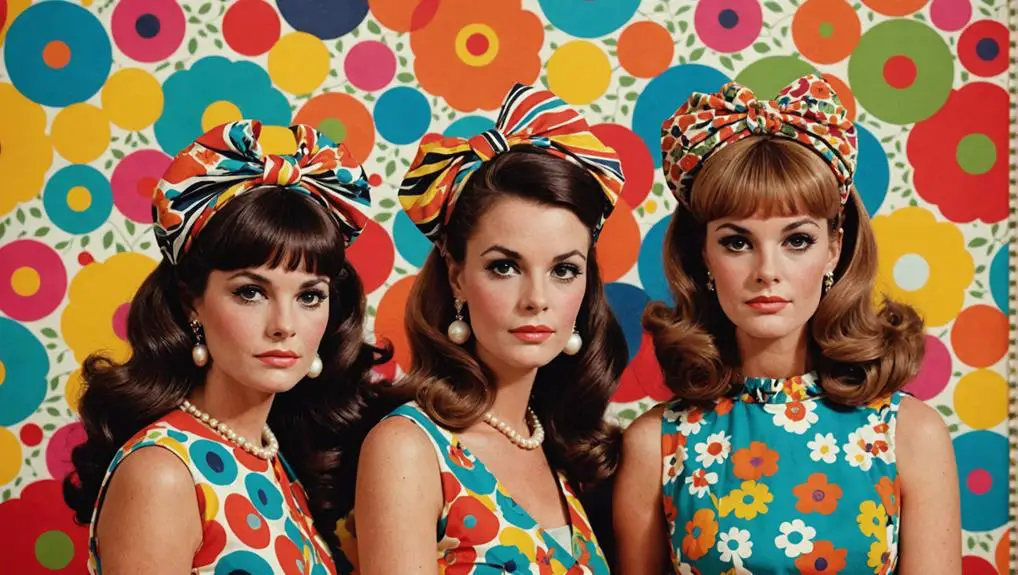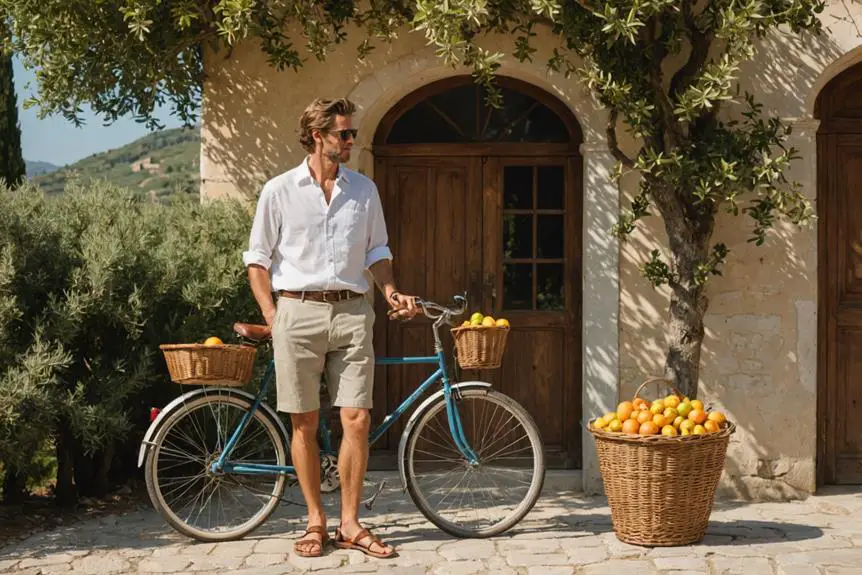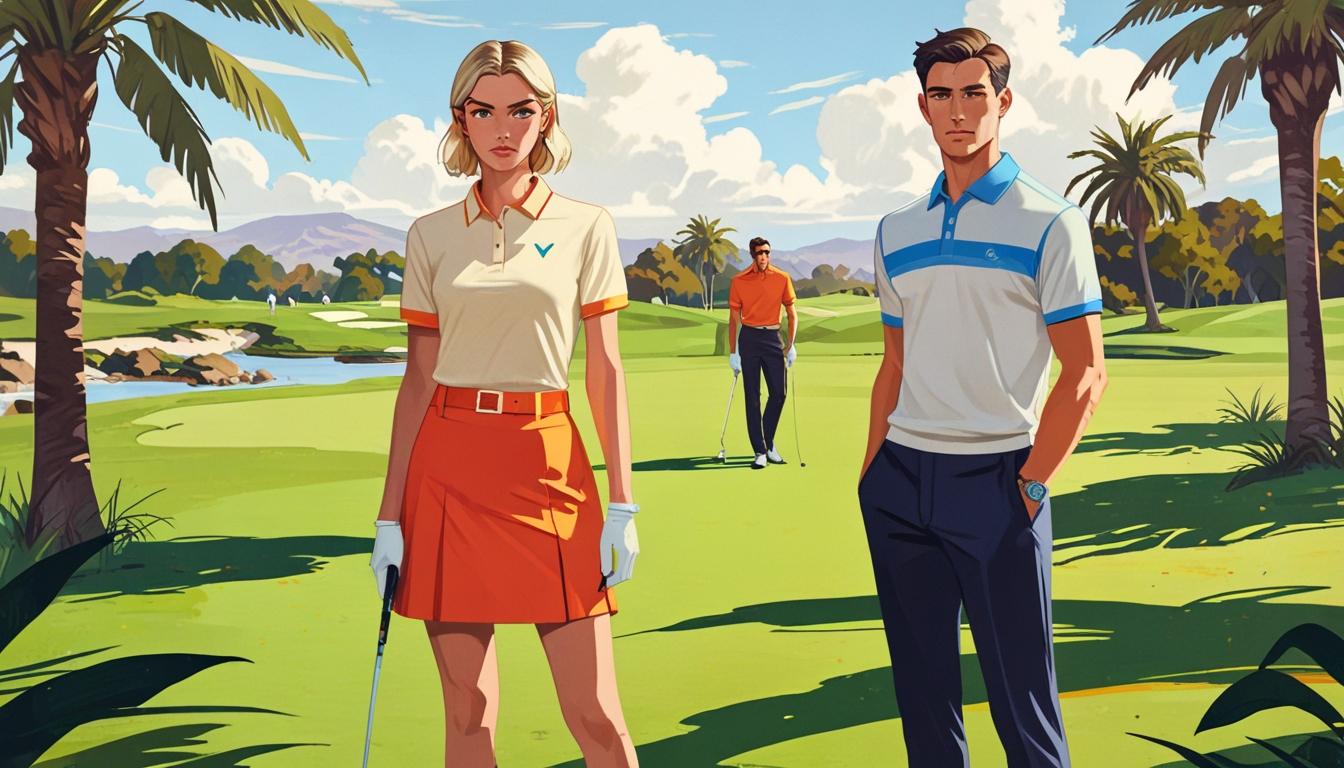In the 1960s, women's headbands evolved from practical items to bold fashion statements, reflecting the era's changing cultural landscape. You'd find headbands in various materials and styles, from silk veils to beaded hippie designs, each symbolizing individuality and rebellion. This decade embraced wider, softer designs that complemented voluminous hairstyles, capturing the spirit of youth and creativity. Icons like Brigitte Bardot and Jackie Kennedy popularized these accessories, bridging casual and sophisticated looks. As you explore further, you'll uncover how these vibrant styles influenced future fashion trends and personal expression during a transformative time in history.
Historical Overview of Headbands
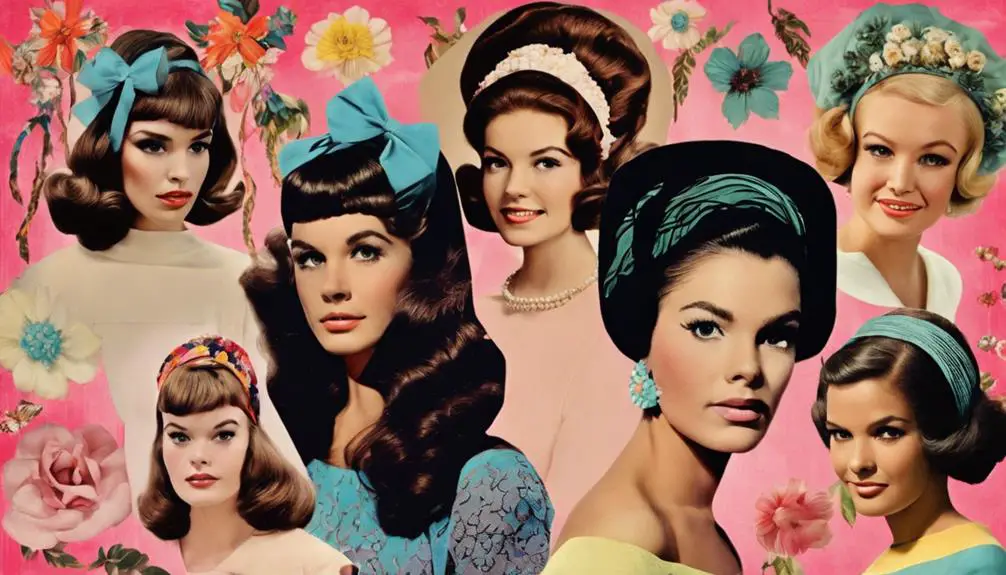
Headbands, once simple hair accessories, evolved considerably over the centuries, reflecting broader cultural trends and societal changes. Dating back to ancient civilizations, these adornments served both practical and decorative roles. Fast forward to the mid-20th century; headbands began to gain prominence during the tumultuous years of World War II. Women wore them not only for style but to keep hair neatly secured while managing wartime responsibilities.
By the 1960s, headbands transformed into must-have fashion statements, especially during events like Fashion Week, where designers showcased innovative designs. They became synonymous with the era's youth culture, complementing iconic hairstyles like the beehive. The materials used varied, from elastic and fabric to plastic, allowing for personal expression and reflecting socio-economic diversity.
In Britain and the US, headbands symbolized femininity while serving a practical purpose, keeping hair away from the face. This evolution marked a significant change, where headbands moved from mere utility to essential fashion accessories, influencing styles for decades to come. Understanding this historical context enriches your appreciation for the headband's role in fashion and society.
Popular Styles of the 1960s
The 1960s ushered in an array of headband styles that not only complemented the era's iconic hairstyles but also resonated with the growing youth culture and its desire for self-expression. Headbands became essential accessories, often paired with voluminous beehive hairstyles, symbolizing the decade's distinctive flair. Women embraced silk veils while driving, merging practicality with elegance, showcasing how headbands could serve functional purposes while enhancing style.
As counterculture movements gained momentum, beaded hippie headbands emerged, reflecting a more relaxed and artistic spirit. These colorful adornments allowed you to express individuality amidst the era's social upheaval. The shift from skinnier headbands to wider, soft designs marked a change towards a more carefree fashion, echoing the broader cultural shifts of the time.
Materials varied widely, with floral patterns and vibrant colors dominating the scene, perfectly aligning with the decade's aesthetic. Such diversity in design not only catered to various tastes but also highlighted the playful and experimental nature of 1960s fashion. In this dynamic environment, headbands became more than just accessories; they were powerful symbols of self-identity and cultural belonging.
Significance in Fashion Culture
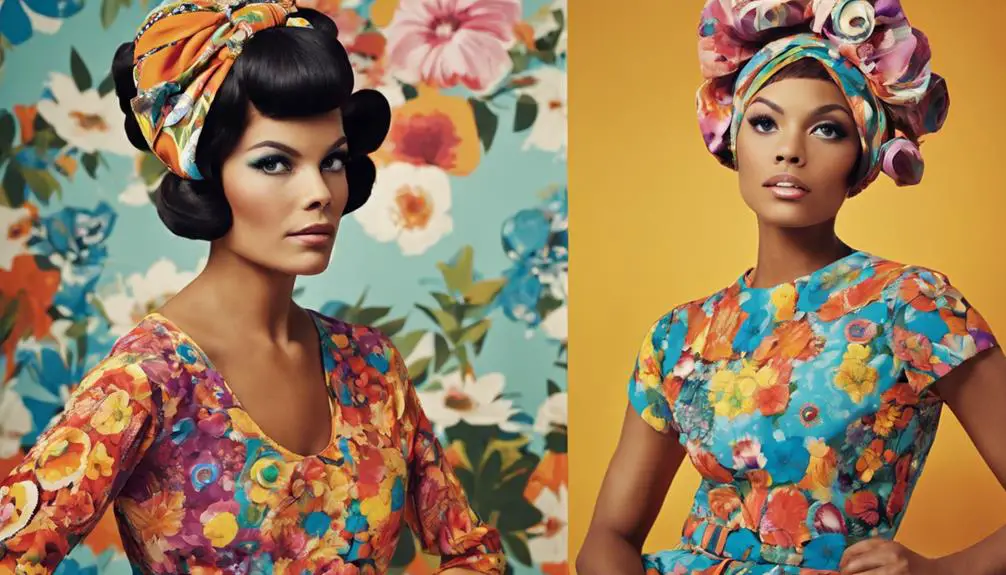
Fashion culture in the 1960s thrived on the boldness and creativity that accessories like headbands brought to women's wardrobes. These headbands weren't just hair accessories; they were symbols of femininity and style, showcasing the wearer's personality and socio-economic status. From simple cloth strips to lavish silk and jeweled designs, headbands reflected a diverse range of aesthetics.
| Material | Style | Cultural Significance |
|---|---|---|
| Cloth | Casual | Everyday wear and freedom |
| Silk | Sophisticated | Elegance and high society |
| Jeweled | Glamorous | Status and celebrity influence |
The accessory's versatility allowed it to shift seamlessly from practical use to a bold fashion statement, bridging casual and sophisticated styles. Icons like Brigitte Bardot popularized the headband, cementing its place in 1960s youth culture. As trends evolved, headbands influenced future fashion movements, paving the way for accessories to become integral to personal expression. In this way, headbands not only complemented popular hairstyles but also became a definitive element of the dynamic fashion landscape of the decade, encapsulating the spirit of liberation and creativity that defined the 1960s.
Iconic Figures and Their Impact
In the vibrant landscape of 1960s fashion, iconic figures played a significant role in shaping the popularity of headbands as more than mere accessories. Brigitte Bardot's portrayal in "Contempt" in 1963 brought the wide black headband into the limelight, establishing it as a definitive symbol of the era's style. Jackie Kennedy's elegant use of headbands further solidified their status, associating them with sophistication and grace.
As cultural tides shifted, The Beatles' female fans adopted headbands, transforming them into emblems of youthful rebellion and forward-thinking fashion. This movement reflected broader societal changes, indicating that headbands weren't just practical; they became symbols of identity.
Designer André Courrèges also played a vital role, incorporating headbands into his collections and influencing both high fashion and mainstream trends. Alongside stars like Twiggy and Nancy Sinatra, who embraced headbands as essential accessories, these figures helped embed headbands into the fashion consciousness of the time. Together, they turned what could've been a simple hair accessory into a powerful statement of style, identity, and cultural significance, marking the headband as a lasting impact on 1960s fashion.
Evolution of Headband Designs
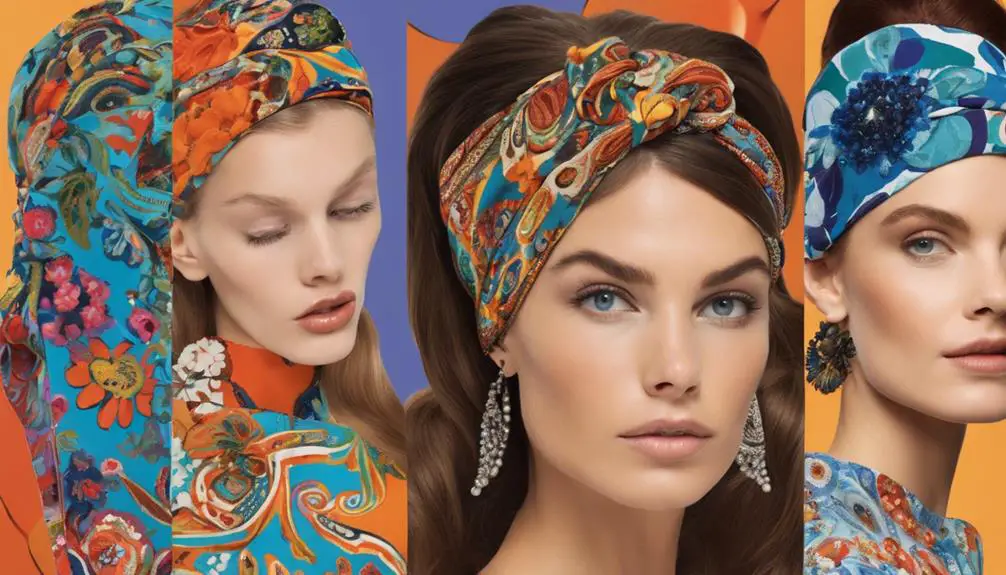
Headbands experienced a remarkable transformation during the 1960s, evolving from basic hair accessories into bold fashion statements. This era marked a shift in design, where headbands became wider and softer, contrasting sharply with the skinny styles that would dominate later decades. You'll notice how the materials used diversified greatly, allowing for an explosion of styles and colors that truly captured the spirit of the time.
- Materials: Fabric, plastic, and metal provided a variety of textures and appearances.
- Designs: Soft, wide shapes replaced the skinny versions, creating a more substantial look.
- Cultural Influence: Vibrant colors and floral patterns reflected the youthful, energetic movements of the 1960s.
- Celebrity Endorsement: Fashion icons paired headbands with signature hairstyles like the beehive, enhancing their allure.
- Aesthetic Appeal: Headbands became a canvas for personal expression, showcasing individuality.
This evolution not only highlighted the aesthetic value of headbands but also their role in the broader cultural landscape, making them essential accessories for women looking to make a statement during this dynamic decade.
Modern Interpretations and Trends
The enduring appeal of headbands can be seen in how modern designers reinterpret the wide, soft styles popular in the 1960s. Today, these headbands blend vintage charm with contemporary flair, offering comfort and versatility that fits seamlessly into your wardrobe. Celebrities like Sydney Sweeney and Bella Hadid are at the forefront of this trend, effortlessly incorporating headbands into both casual and sophisticated outfits.
This resurgence isn't just a fleeting fashion statement; it aligns with a broader retro revival, where vintage-inspired accessories are making a notable comeback. You'll find headbands crafted from jersey and cotton blends, echoing the textures of the 1960s while catering to today's tastes. These materials not only provide nostalgic aesthetics but also enhance comfort.
Moreover, the modern headband serves as a bridge between casual and elegant looks, appealing to a diverse range of consumers. Whether you're dressing up for a night out or keeping it relaxed for brunch, a headband can elevate your style. By embracing these modern interpretations, you're not just wearing an accessory; you're connecting with a timeless trend that celebrates both history and contemporary fashion.
Frequently Asked Questions
What Year Was the Headband Popular?
The headband's popularity surged in the 1960s, particularly around 1963, as fashion icons showcased various styles. You'd notice how these accessories transformed hairstyles, reflecting broader trends and cultural movements of that vibrant decade.
Are Headbands 60S or 70s?
Headbands became iconic in the 1960s, reflecting vibrant fashion trends. While they remained popular into the 70s, their essence shifted. You'll notice the 60s styles are bolder, often adorned, contrasting with the more casual 70s approach.
How to Wear a Headband at 60?
To wear a headband at 60, choose a comfortable, stylish option. Position it slightly back from your hairline for volume, and pair it with outfits that reflect your personal flair and timeless elegance.
What Was the Most Popular Hairstyle in the 1960s?
The most popular hairstyle in the 1960s was the beehive. You'd see it towering high, crafted with backcombing and hair products, symbolizing boldness and individuality, often showcased by iconic figures like Audrey Hepburn and Brigitte Bardot.
